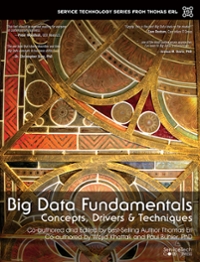Question
Working in go, finish writing the code for an NFA package nfa // A state in the NFA is labeled by a single integer. type
Working in go, finish writing the code for an NFA
package nfa
// A state in the NFA is labeled by a single integer. type state uint
// TransitionFunction tells us, given a current state and some symbol, which // other states the NFA can move to. // // Deterministic automata have only one possible destination state, // but we're working with non-deterministic automata. type TransitionFunction func(st state, act rune) []state
func Reachable( // `transitions` tells us what our NFA looks like transitions TransitionFunction, // `start` and `final` tell us where to start, and where we want to end up start, final state, // `input` is a (possible empty) list of symbols to apply. input []rune, ) bool { // TODO Write the Reachable function, // return true if the nfa accepts the input, // return true if it doesn't reach to the final state with that input panic("TODO: implement this!") }
//TESTER FUNCTION import ( "testing" )
func dagTransitions(st state, sym rune) []state { /* * 0 -a-> 1 * 0 -a-> 2 * 1 -b-> 3 * 2 -c-> 3 */ return map[state]map[rune][]state{ 0: map[rune][]state{ 'a': []state{1, 2}, }, 1: map[rune][]state{ 'b': []state{3}, }, 2: map[rune][]state{ 'c': []state{3}, }, }[st][sym] }
func expTransitions(st state, sym rune) []state { /* * 0 -a-> 1 * 0 -a-> 2 * 0 -b-> 2 * 1 -b->0 */ return map[state]map[rune][]state{ 0: map[rune][]state{ 'a': []state{1, 2}, 'b': []state{2}, }, 1: map[rune][]state{ 'b': []state{0}, }, 2: map[rune][]state{}, }[st][sym] }
func langTransitions(st state, sym rune) []state { /* * 0 -a-> 0 * 0 -b-> 1 * 1 -a-> 1 * 1 -b-> 0 */ return map[state]map[rune][]state{ 0: map[rune][]state{ 'a': []state{0}, 'b': []state{1}, }, 1: map[rune][]state{ 'a': []state{1}, 'b': []state{0}, }, }[st][sym] }
func TestReachable(t *testing.T) { nfas := map[string]TransitionFunction{ "dagTransitions": dagTransitions, "expTransitions": expTransitions, "langTransitions": langTransitions, }
tests := []struct { nfa string start, final state input []rune expected bool }{ {"dagTransitions", 0, 3, []rune{'a', 'b'}, true}, {"dagTransitions", 0, 3, []rune{'a', 'c'}, true}, {"dagTransitions", 0, 1, []rune{'a'}, true}, {"dagTransitions", 0, 0, nil, true}, {"dagTransitions", 0, 3, []rune{'a', 'a'}, false}, {"dagTransitions", 0, 3, []rune{'a'}, false}, {"dagTransitions", 0, 1, []rune{'b'}, false}, {"dagTransitions", 0, 0, []rune{'b'}, false},
{"expTransitions", 0, 0, []rune{'a', 'b'}, true}, {"expTransitions", 0, 2, []rune{'a', 'b', 'a'}, true}, {"expTransitions", 0, 2, []rune{'a', 'b', 'a', 'b', 'a'}, true}, {"expTransitions", 0, 0, []rune{'a', 'a'}, false}, {"expTransitions", 0, 2, []rune{'a', 'b', 'a', 'b'}, false},
{"langTransitions", 0, 0, []rune{'a', 'b', 'b'}, true}, {"langTransitions", 0, 1, []rune{'a', 'a', 'b'}, true}, {"langTransitions", 0, 0, []rune{'a', 'a', 'a', 'a', 'a'}, true}, {"langTransitions", 0, 0, nil, true}, {"langTransitions", 0, 1, []rune{'a', 'a'}, false}, {"langTransitions", 0, 0, []rune{'a', 'b', 'a', 'a'}, false},
// TODO add more tests for 100% test coverage }
for _, test := range tests { func() { defer func() { if recover() != nil { t.Errorf("Reachable panicked on (%s, %d, %d, %v); expected %t", test.nfa, test.start, test.final, string(test.input), test.expected) } }() actual := Reachable(nfas[test.nfa], test.start, test.final, test.input) if test.expected != actual { t.Errorf("Reachable failed on (%s, %d, %d, %v); expected %t, actual %t", test.nfa, test.start, test.final, string(test.input), test.expected, actual) } }() } }
Step by Step Solution
There are 3 Steps involved in it
Step: 1

Get Instant Access to Expert-Tailored Solutions
See step-by-step solutions with expert insights and AI powered tools for academic success
Step: 2

Step: 3

Ace Your Homework with AI
Get the answers you need in no time with our AI-driven, step-by-step assistance
Get Started


